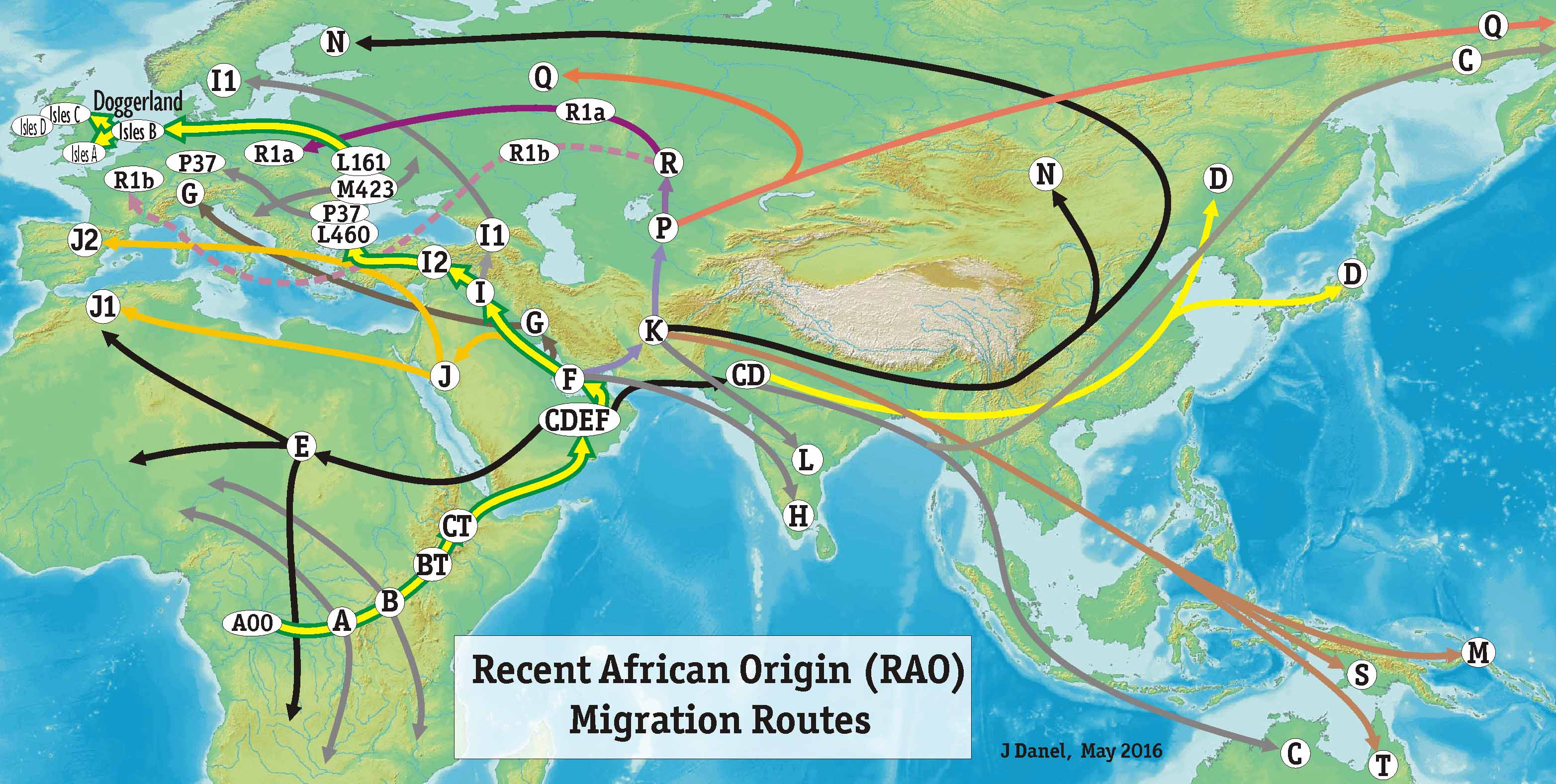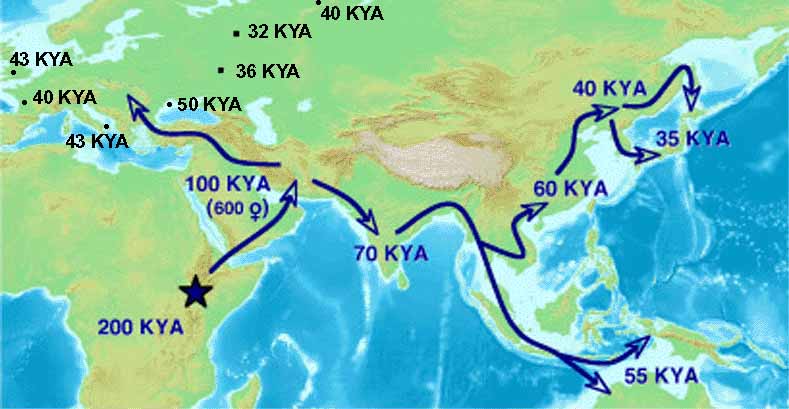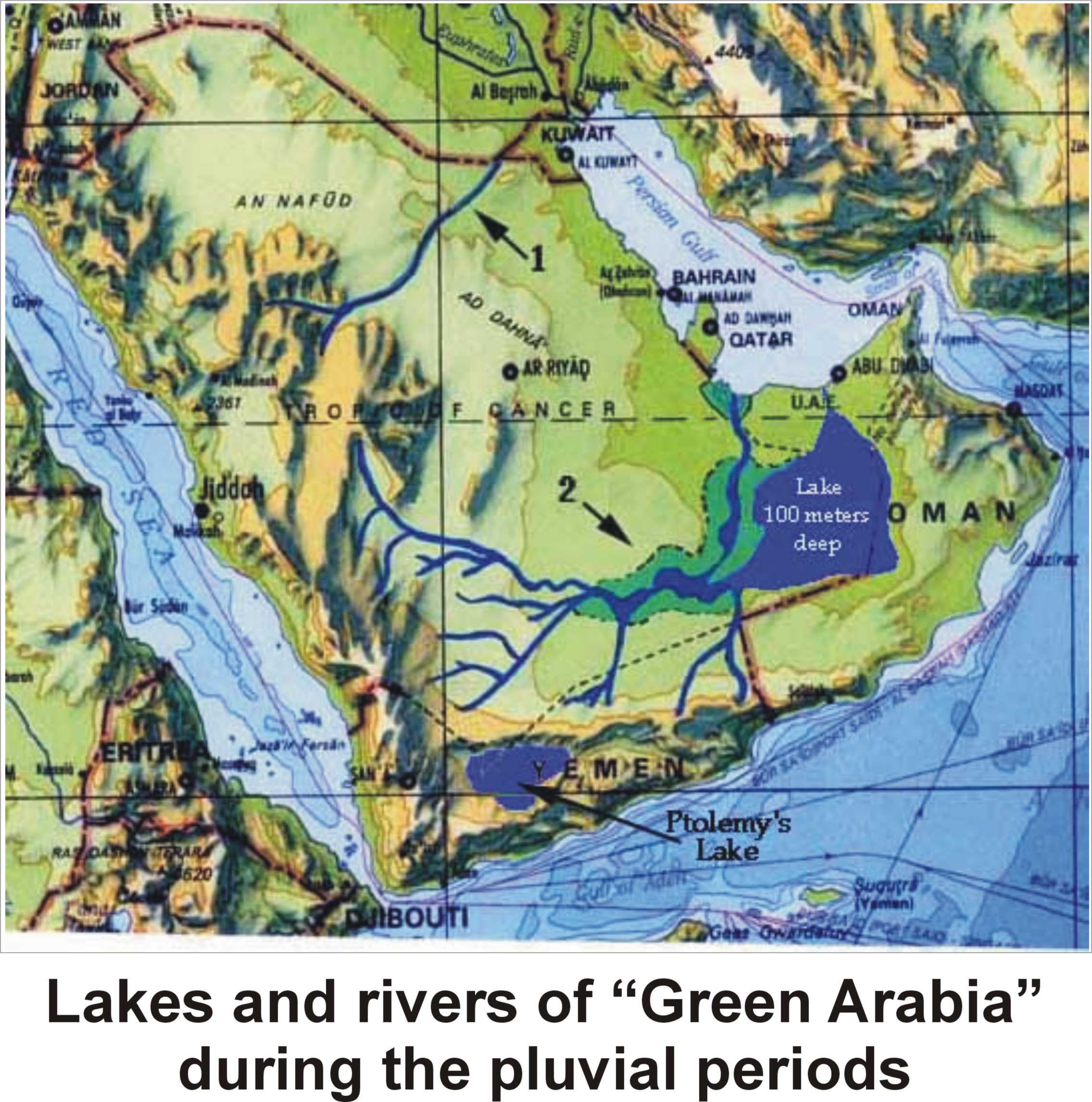




Out of Africa
The Mt. Toba catastrophe reset the competitive arena for most of the fauna. That had major effects, not just in the near-extinction of the modern humans, but also on the populations of Homo Erectus. Homo Heidelburgensis, Neanderthals, Denisovans and other inhabitants of Asia and Europe. It may have been the cause of the final extinction of Homo Erectus and others of these groups.
Furthermore, the populations of the large predators - saber-toothed cats, cave bears, etc. - were sharply reduced. Some went extinct. The smaller prey animals were also reduced, but in the new low-predator environment they rebounded quickly. Plants also quickly rebounded, taking advantage of the soil improvement by the volcanic ash.
The competitive situation greatly improved. Food was abundant and the competition was low. Now, Haplogroup CT as the new top predator was unchallenged in its new invasion* of southern Asia.
70,000 y.a. __The recent, successful main migration Out of Africa began via the southern route.
50,000 y.a. __The wet, warm climate of the
Mousterian Pluvial was a favorable environment.
The early migrants were mainly Haplogroup CT. Several new groups quickly emerged and diverged from CT to become extremely successful in the bountiful enviroment:The much lower sea levels, as much as 200 feet lower, during this time allowed the small groups to cross the Bab el-Mandeb Strait to Arabia. Then they travelled through the warm and verdant "Green Arabia" or they followed the coastline eastward to the Persian Gulf and the Indus river. These modern humans colonized much of southern Asia.Migration
Out of Africa

|

